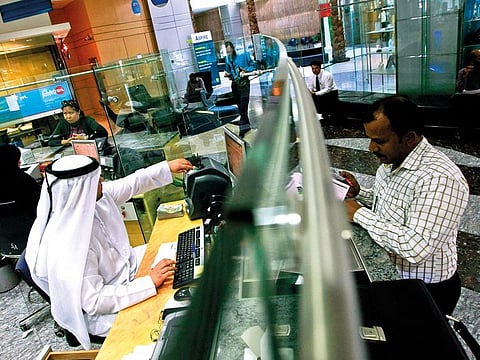UAE banks expected to report strong H1 profits
Higher credit yields and lower costs to support profitability

Dubai: UAE banks are expected to report strong first half results supported by loan growth, lower provisions and shrinking costs.
In the first quarter of the year, UAE banks generated healthy earnings despite challenging economic conditions, according to a recent study by professional services firm Alvarez & Marsal (A&M).
The first quarter witnessed a surge in profitability, underpinned by increase in loans and advances, and a stabilised yield on credit.
“Overall the profitability for the UAE banks has increased. This stems from increased operating income, reduced costs and increased balance sheet leveraging, offset by an increase in cost of risk. This very much reflects the funding cost pressures that continue to impact the banks amid increased competition for deposits and tighter liquidity, consequently leading to lower net interest margins in Q1 2019,” said Dr Saeeda Jaffar, A&M Managing Director and Middle East Office and Co-Head in the firm’s Strategic Performance Improvement Practice.
While the operating environment and credit conditions have remained largely unchanged during the second quarter of 2019, analysts expect banks to continue to report strong profitability largely driven by higher yield on credit and decrease in cost-to-income ratio.
According to credit data analysed by ADCB’s Economics Team, credit growth strengthened modestly to 4.4 per cent year on year in April from 4.2 per cent the previous month. The April domestic loan growth was driven by the government segment (up 2.2 per cent month on month), with both the GRE and private components remaining broadly flat. Within the private sector, corporate credit growth was positive, while retail loans fell by 0.3 per cent month on month reflecting weak consumer demand.
Credit growth
The latest credit sentiment survey of the Central Bank of UAE (CBUAE) has projected higher credit growth in the second quarter. For the first quarter of the year, the survey data suggested an increase in demand appetite for business loans. Demand for personal loans in aggregate, has recovered and moved into the positive territory. Such an increase was attributable to the strengthening demand in Dubai and Northern Emirates.
The increase in loan demand was most evident in financial institutions (excluding banks), construction, and all others. Transport, storage and communication, manufacturing, and retail and wholesale trade have also increased but to a lesser extent.
For the second quarter of the year, survey respondents predicted demand for loans to increase across all industries, predominantly in construction, transport, storage and communications, manufacturing, and retail and wholesale trade.
The central bank’s credit sentiment survey results had revealed an increase in demand for business loans across all emirates, and particularly in Dubai. In terms of outlook for the June quarter, demand appetite for business and personal loans were expected to increase.
Operating income
An analysis of data for the first quarter by A&M showed operating income growth increased significantly on the back of a rise in non-interest income following increased lending activity. Seven of the top nine bank’s cost-to-income (C/I) ratio decreased from 33.5 per cent to 31.5 per cent, reversing last quarter’s increase. This was due to the surge in operating income, combined with some banks reducing sales and general administrative costs. After a quadruple rise in 2018, the overall C/I ratio decreased.
“Whilst it is possible that liquidity could tighten in the coming months, we continue to maintain a balanced view towards the sector, with a focus on asset quality and improving profitability. The tightening could also help banks readjust business models now shaped by new financing-cost realities,” said Dr Jaffar.
Looking ahead, for the rest of the year, the banks expected to face margin pressures from anticipated US interest rate cuts. A 25 basis point cut in US rates will pull down the net interest margin at banks by about 6 basis points, analyst Edmond Christou of Bloomberg Intelligence said in a recent report.
Loans make up more than 70 per cent of Gulf banks’ earnings assets that are largely floating-rate corporate facilities, and changes in interest rates have a huge impact on income from lending, according to the Bloomberg Intelligence report.
Sign up for the Daily Briefing
Get the latest news and updates straight to your inbox



